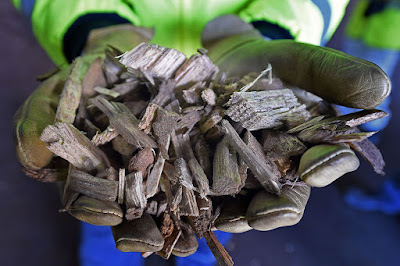The European Union’s proposals for revising its renewable energy policies are greenwashing and don’t solve the serious flaws, say environmental groups.
The EU gets 65 per cent of its renewable energy from biofuels – mainly wood – but it is failing to ensure this bioenergy comes from sustainable sources, and results in less emissions than burning fossil fuels. Its policies in some cases are leading to deforestation, biodiversity loss and putting more carbon dioxide in the atmosphere than burning coal.
“Burning forest biomass on an industrial scale for power and heating has proved disastrous,” says Linde Zuidema, bioenergy campaigner for forest protection group Fern. “The evidence that its growing use will increase emissions and destroy forests in Europe and elsewhere is overwhelming.”
On 30 November the European Commission unveiled a draft “clean energy” package for the period up to 2030. On the surface, these proposals address some of the issues with existing renewable energy policies.
But environmental groups who have been analysing the proposals say that the changes will make little difference.
“It’s almost worse than doing nothing,” says Sini Erajaa, the bioenergy policy officer for BirdLife Europe & Central Asia, who describes the changes as greenwashing.
Burning biomass
For instance, one proposed change is to apply the EU’s sustainability criteria to biomass used in heat and power plants whose output is 20 megawatts or more. “This means, for instance, that electricity and heat from biomass have to produce at least 80 per cent fewer greenhouse gas emissions compared to fossil fuels by 2021 and 85 per cent less by 2026,” states a memo on the revised renewable energy directive.
You might think this will ensure that burning biomass does not result in higher greenhouse gas emissions than fossil fuel use, but far from it. That statement is misleading because it does not make clear that the EU’s method for calculating emissions assumes burning biomass produces no CO2 at all. “Emissions from the fuel in use shall be taken to be zero for biofuels and bioliquids,” states a 2009 directive.
The assumption is that these emissions don’t have to be counted because the growth of plants soaks up as much CO2 as is emitted when they are burned. But this assumption is not true on the timescales that matter for limiting climate change. Burning wood can result in higher emissions than burning coal.
This fact is not controversial. Buried deep in the EU’s own impact assessment is an acknowledgement that burning forest biomass is not carbon neutral, and that using some forms of forest biomass can increase emissions.
“Biogenic emissions remain high (higher than emissions from fossil fuels) beyond a policy-relevant timeframe for sawn wood, stumps, coarse dead wood,” it states on page 106.
Carbon neutral?
But because the EU doesn’t count these emissions, it is claiming carbon reductions for activities that are sometimes increasing emissions – what New Scientist has recently revealed as “the great carbon scam”.
For instance, the EU is not just burning small bits of wood waste for energy, which can indeed reduce emissions. Whole trees are being felled for energy and often in an unsustainable way, say campaigners.
A recent report by Birdlife and other groups documents several examples of how EU subsidies are driving deforestationin Europe and beyond. Supposedly protected forests are being cut down in Slovakia and Italy, for instance.
Campaigners want the EU to abandon its drive to use ever more bioenergy, particularly forest bioenergy. “We are not saying bioenergy has no role to play,” says Erajaa. “But it will have to be smaller.”
When asked about these criticisms, a spokesperson for the European Commission said it is committed to making sure the biomass used for energy throughout the EU is sustainable.
The draft proposals now go before the European parliament for review, so there is still a chance to amend them. But countries and industries raking in profits from bioenergy subsidies are fighting to prevent meaningful reform.




Show Comments